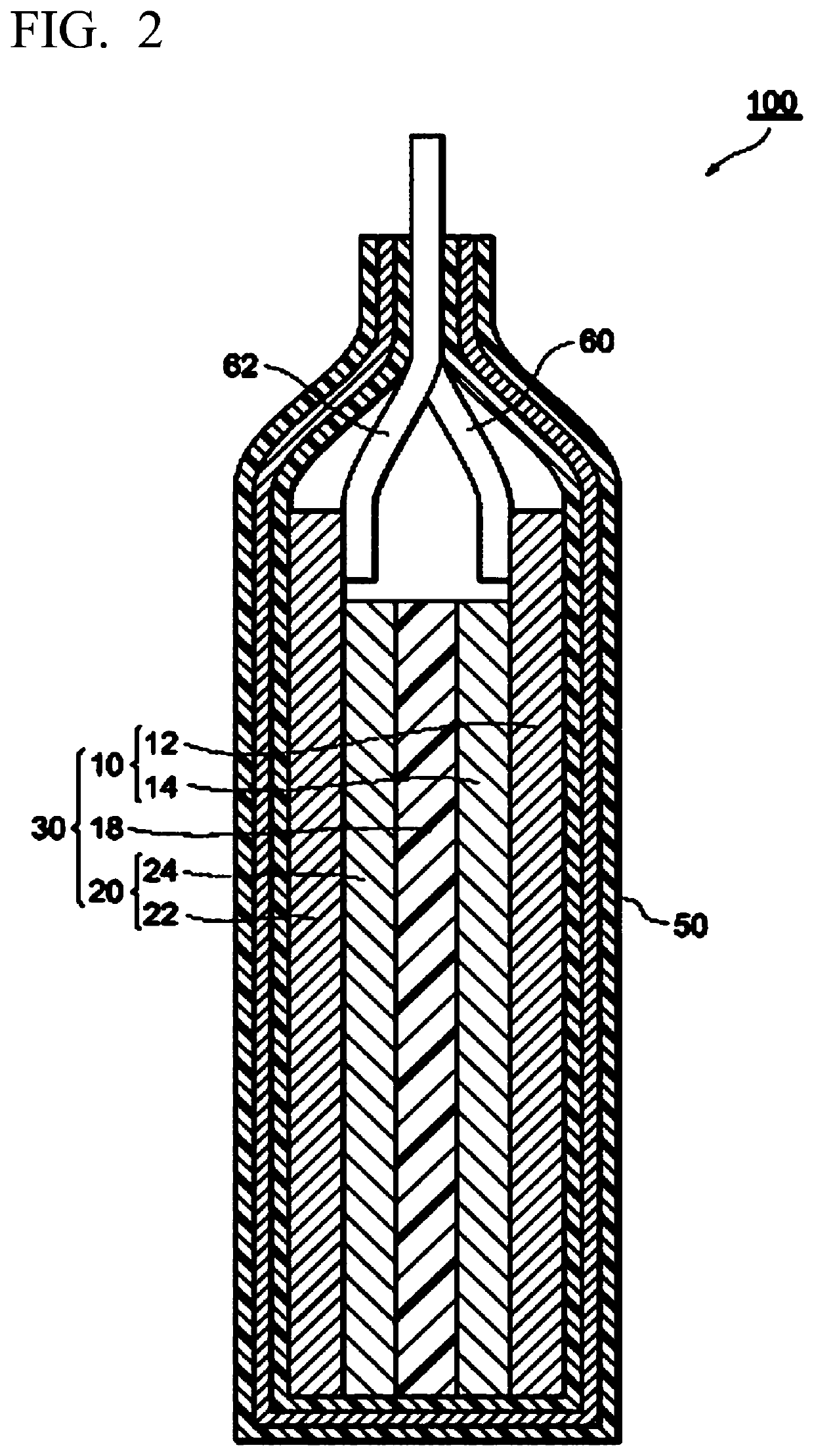Lithium ion secondary battery
a secondary battery and lithium ion technology, applied in the direction of positive electrodes, active material electrodes, cell components, etc., to achieve the effect of suppressing the disruption of the conductive path, high aspect ratio, and low conductivity
- Summary
- Abstract
- Description
- Claims
- Application Information
AI Technical Summary
Benefits of technology
Problems solved by technology
Method used
Image
Examples
example 1
[0070](Production of Composite Particles)
[0071]LiCl was used as the water-soluble compound, and Co3O4 having a particle size of 50 nm was used as the transition metal oxide. Using a planetary ball mill, 18 g of LiCl and 2 g of Co3O4, 0.1 g of single-wall carbon nanotubes (SWNT), and 20 g of ZrO2 balls as crushing media were put into 100 cc pot, and complexation treatment was performed at a rotation speed of 400 rpm for 3 minutes to produce composite particles.
[0072](Production of Positive Electrode)
[0073]LiCoO2 was used as the positive electrode active material, carbon black was used as the conductive auxiliary agent, and PVDF was used as the binder. By mixing at a ratio of LiCoO2:composite particles:carbon black:PVDF=85:5:5:5 (parts by mass) and dispersing this in N-methyl-2-pyrrolidone (NMP) using a hybrid mixer, the slurry for forming the positive electrode active material layer was prepared. An aluminum foil having a thickness of 20 μm was coated with this slurry such that the c...
example 2
[0083]A lithium ion secondary battery for evaluation of Example 2 was produced in the same manner as in Example 1 except that the particle size of the transition metal oxide was changed to the value illustrated in Table 1 in (Production of composite particles).
example 3
[0084]A lithium ion secondary battery for evaluation of Example 3 was produced in the same manner as in Example 1 except that the particle size of the transition metal oxide was changed to the value illustrated in Table 1 in (Production of composite particles).
PUM
| Property | Measurement | Unit |
|---|---|---|
| particle size | aaaaa | aaaaa |
| particle size | aaaaa | aaaaa |
| diameter | aaaaa | aaaaa |
Abstract
Description
Claims
Application Information
 Login to View More
Login to View More - R&D
- Intellectual Property
- Life Sciences
- Materials
- Tech Scout
- Unparalleled Data Quality
- Higher Quality Content
- 60% Fewer Hallucinations
Browse by: Latest US Patents, China's latest patents, Technical Efficacy Thesaurus, Application Domain, Technology Topic, Popular Technical Reports.
© 2025 PatSnap. All rights reserved.Legal|Privacy policy|Modern Slavery Act Transparency Statement|Sitemap|About US| Contact US: help@patsnap.com


